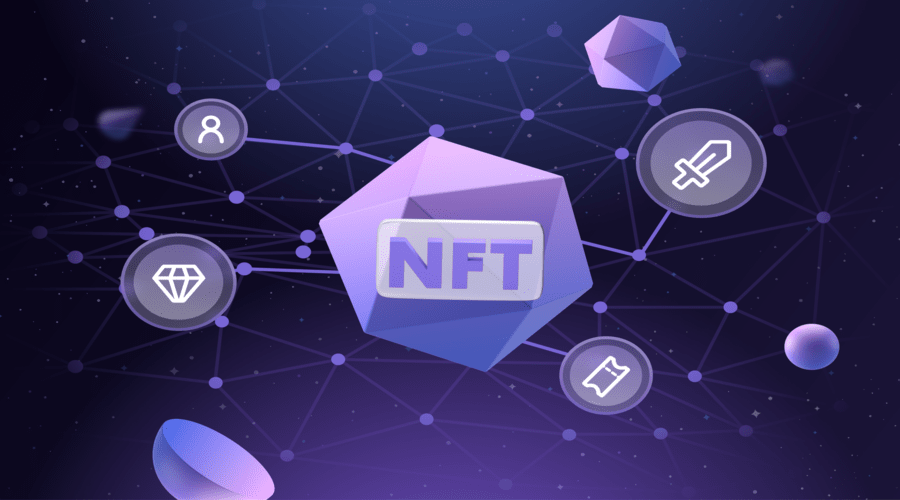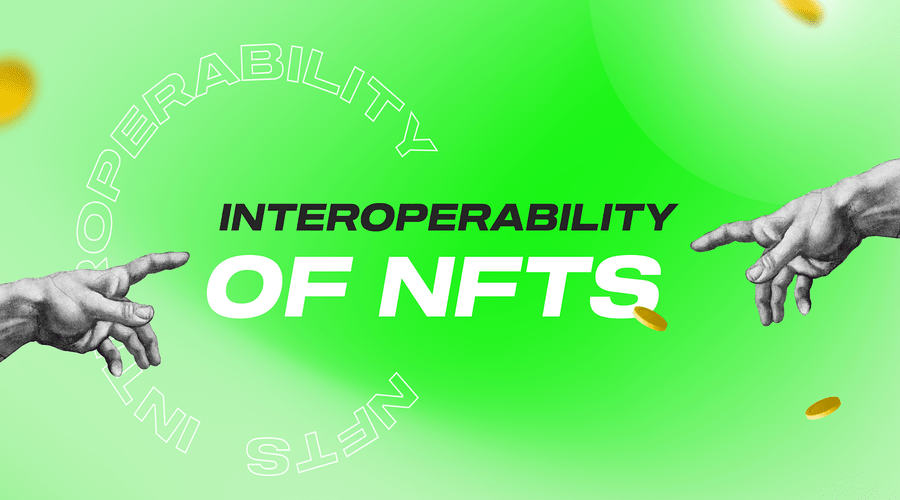In recent years, Non-Fungible Tokens (NFTs) have gained immense popularity in the digital world. These unique digital assets have revolutionized various industries, including art, gaming, and collectibles. However, one of the major hurdles in the widespread adoption of NFTs is the challenge of achieving seamless interoperability. In this article, we will explore the difficulties associated with NFT interoperability and discuss potential solutions to overcome them.
Understanding NFTs
NFTs are unique digital assets that are stored on a blockchain, typically using Ethereum’s ERC-721 or ERC-1155 token standards. Unlike cryptocurrencies such as Bitcoin or Ethereum, NFTs represent ownership or proof of authenticity of a specific digital item. This could include digital artwork, virtual real estate, in-game items, or even domain names.
The Importance of Interoperability
Interoperability is crucial for NFTs to reach their full potential. It refers to the ability of different NFT platforms, blockchains, and smart contracts to communicate and interact seamlessly with each other. Without interoperability, NFTs are limited to specific platforms, reducing their liquidity, utility, and overall value.
- Seamless Communication: Interoperability enables different systems, devices, and applications to communicate and exchange data seamlessly. It allows for the smooth transfer of information, ensuring compatibility and interoperability between different platforms.
- Efficient Workflow: Interoperability streamlines workflows by eliminating the need for manual data entry and reducing duplication of efforts. It allows different systems to work together cohesively, automating processes and improving overall efficiency.
- Enhanced Collaboration: Interoperability promotes collaboration by enabling different stakeholders to share and access data across different platforms. It facilitates teamwork, data sharing, and coordinated decision-making, leading to improved productivity and outcomes.
- Data Accessibility and Availability: Interoperability ensures that data is accessible and available when needed, regardless of the system or platform it resides in. It eliminates data silos and enables authorized users to retrieve relevant information in real-time, enhancing decision-making and analysis.
- Patient-Centric Healthcare: In the healthcare industry, interoperability is critical for providing patient-centric care. It allows healthcare providers to securely share patient information, ensuring continuity of care, reducing medical errors, and improving patient outcomes.
- Innovation and Technology Advancement: Interoperability fosters innovation by encouraging the development of new technologies and applications that can seamlessly integrate with existing systems. It enables the creation of interconnected ecosystems, promoting the development and adoption of advanced solutions.
- Cost Savings: Interoperability reduces costs by eliminating the need for costly system integrations or custom-built interfaces. It enables organizations to leverage existing infrastructure and solutions, minimizing expenses associated with data exchange and integration.
- Regulatory Compliance: Interoperability plays a crucial role in meeting regulatory requirements and standards. It ensures compliance with data privacy and security regulations and facilitates the seamless sharing of information while maintaining data integrity and protection.
- User Experience: Interoperability improves user experience by providing a seamless and integrated environment. It allows users to access and utilize data from different sources without disruptions, leading to a more efficient and user-friendly experience.
- Scalability and Future-Proofing: Interoperability supports scalability by allowing systems to expand and integrate with new technologies and platforms. It future-proofs organizations by ensuring that their systems can adapt and evolve with changing needs and technological advancements.
Challenges of NFT Interoperability
Fragmented Ecosystems
The NFT ecosystem is highly fragmented, with numerous platforms and marketplaces operating independently. Each platform has its own set of standards, marketplaces, and user bases. This fragmentation hampers the seamless transfer of NFTs between different platforms, creating silos and limiting their reach.
Divergent Standards
Currently, there is a lack of standardized protocols and token standards across different NFT platforms. Each platform may have its own unique token standard or implementation, making it difficult for NFTs to work universally across multiple platforms. This lack of standardization leads to compatibility issues and inhibits the free flow of NFTs.
Scalability Issues
As NFT popularity continues to soar, scalability becomes a significant challenge. Most NFT platforms, especially those built on Ethereum, face congestion and high gas fees during peak periods. This congestion makes it expensive and inefficient to transfer NFTs between platforms, hindering interoperability.
Smart Contract Compatibility
NFTs rely on smart contracts to facilitate their creation, ownership, and transfer. However, different blockchain networks support different programming languages and smart contract platforms. This disparity in smart contract compatibility makes it challenging to ensure seamless interoperability across different blockchains.
Cross-Chain Communication
With the rise of various blockchain networks, the need for cross-chain interoperability is becoming increasingly important. Transferring NFTs between different blockchains requires efficient communication protocols and bridges that can verify ownership and maintain the integrity of the asset. However, developing reliable cross-chain communication standards is a complex task.

Potential Solutions for Interoperability
Standardization Efforts
The NFT community is actively working towards standardizing protocols and token standards. Initiatives like the ERC-998 and ERC-1155 standards aim to create more flexible and interoperable token designs. Standardization will simplify the transfer of NFTs between platforms, enabling broader adoption and enhancing liquidity.
Interoperability Protocols
Interoperability protocols like Polkadot, Cosmos, and ICON are designed to connect different blockchain networks, allowing NFTs to be transferred seamlessly. These protocols act as intermediaries, facilitating cross-chain communication and enabling interoperability between otherwise incompatible platforms.
Cross-Chain Bridges
Cross-chain bridges, such as the Ethereum Bridge or the Binance Bridge, provide a means to transfer NFTs between different blockchains. These bridges establish trustless connections between blockchains, ensuring the secure transfer of NFT assets. However, more development and integration efforts are needed to achieve widespread adoption.
Layer 2 Solutions
Layer 2 scaling solutions, such as Optimistic Rollups and Sidechains, aim to alleviate the scalability issues faced by NFT platforms. These solutions operate on top of existing blockchains and process transactions off-chain, reducing congestion and gas fees. Implementing layer 2 solutions can enhance interoperability by improving the efficiency of NFT transfers.
Inter-NFT Communication Standards
Inter-NFT communication standards propose a framework for NFTs to interact with each other. These standards enable NFTs to recognize and respond to actions or events happening in other NFTs, opening up possibilities for enhanced functionality and interoperability. Inter-NFT communication can pave the way for dynamic NFT collaborations and interactions.
The Future of NFT Interoperability
The challenges of achieving seamless NFT interoperability are being actively addressed by the blockchain and NFT communities. With ongoing standardization efforts, the development of interoperability protocols, and the exploration of cross-chain solutions, the future of NFT interoperability looks promising. As these technologies mature and gain wider adoption, NFTs will become more accessible, fungible, and valuable.
The future of NFT interoperability holds great promise as the blockchain and NFT communities continue to tackle the challenges associated with it. Here’s a glimpse of what the future may hold:
- Enhanced Standardization: Efforts towards standardizing protocols and token standards will mature, leading to more unified and compatible NFT ecosystems. This will simplify the transfer of NFTs between different platforms, enhancing interoperability and expanding the reach of digital assets.
- Cross-Chain Solutions: The development of efficient cross-chain solutions will bridge the gap between different blockchain networks. These solutions will enable seamless communication and transfer of NFTs across disparate blockchains, fostering interoperability and expanding the possibilities for creators, collectors, and investors.
- Improved Scalability: Scalability solutions, such as layer 2 solutions and advancements in blockchain technology, will address the current limitations faced by NFT platforms. This will reduce congestion, lower transaction costs, and improve the speed and efficiency of NFT transfers, further enhancing interoperability.
- Inter-NFT Communication: The exploration and development of inter-NFT communication standards will enable NFTs to interact and collaborate with each other. This will unlock new possibilities for dynamic NFT collaborations, composite artwork, and interconnected digital experiences, revolutionizing the concept of ownership and utility.
- Mainstream Adoption: As NFTs gain more mainstream recognition and acceptance, the demand for interoperability will increase. This will drive further innovation and investment in interoperability solutions, ultimately leading to a more connected and accessible NFT ecosystem.
Conclusion
Achieving seamless NFT interoperability is a complex task that requires collaboration and innovation across the blockchain industry. The challenges posed by fragmented ecosystems, divergent standards, scalability issues, smart contract compatibility, and cross-chain communication are being met with various solutions and initiatives. As the NFT landscape evolves, interoperability will unlock new possibilities for creators, collectors, and investors alike.
FAQs
- Q: How can NFT interoperability benefit artists and creators? A: NFT interoperability allows artists and creators to reach a broader audience and expand their market presence by enabling the seamless transfer of their digital assets between different platforms.
- Q: Are there any risks associated with NFT interoperability? A: While interoperability offers numerous benefits, there are risks such as potential security vulnerabilities and the need for trustless cross-chain bridges. It’s essential to consider these risks and adopt best practices to mitigate them.
- Q: Can NFT interoperability increase the liquidity of digital assets? A: Yes, interoperability enhances the liquidity of NFTs by enabling them to be traded and transferred across various platforms. This increased liquidity attracts more buyers and sellers, leading to a more vibrant and dynamic marketplace.
- Q: How can standardization efforts improve NFT interoperability? A: Standardization efforts establish common protocols and token standards, enabling NFTs to work universally across different platforms. Standardization simplifies the transfer process and fosters interoperability.
- Q: What role do layer 2 solutions play in NFT interoperability? A: Layer 2 solutions address scalability issues by processing transactions off-chain. By improving the efficiency of NFT transfers, layer 2 solutions enhance interoperability and user experience.

